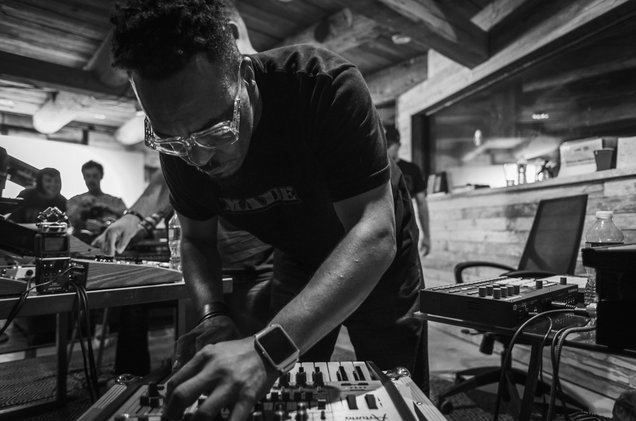Dance music’s diversity problem is, at this point, well-documented. While the genre started as a haven for gay minorities, the modern scene has been taken over by mainly white suburban youth or affluent Europeans.
Smirnoff, the vodka company, has thought a lot about this and discovered that 1 percent of all DJs and producers make 77 percent of their peers profits. Last year, only 10 percent of electronic festival headliners were women, according to Smirnoff’s findings, and most of the DJs and producers making big waves are straight white men.
“Smirnoff is a firm believer in inclusivity,” says local senior brand manager Justin Medcraft. “Inclusivity and diversity are clearly linked, but the biggest opportunity, given a lot of what’s been going on recently, is that diversity is something we want to contribute to in the future.”
So far, Smirnoff has been doing that through its Smirnoff Sound Collective initiative, which has told the stories of the female-centric Discwoman collective and the Latin artists of NAAFI with its Tribes documentary series. It has also married same-sex couples and celebrated the resilience and strength of the LGBTQ community at its Smirnoff House EDC festival installations, and in 2017, Smirnoff Sound Collective wants to take its initiative one step further. It’s going to get involved in the careers of up-and-coming artists directly.
“It’s a platform that we’re building in collaboration with Mixmag that’s goal is to take the diverse artists of today and turn them into the icons of tomorrow,” Medcraft says. “We want to make sure, in the future, the electronic music stars and icons are going to be more representative of diverse backgrounds. This is how we feel we can make a shift toward that.”
The program brings rising electronic stars of all backgrounds, genders and identities together with established artists who don’t just succeed in the industry, but actively lead its evolution. For the next 12 months, Smirnoff will take an active hand in the careers of program members Autograf, Nomi Ruiz, Kissey, Julia Govor, Cassian, Tygapaw, Shigeto, Cakes Da Killa, Amtrac, Nina Dioz, Cry Baby and Gina Turner. In fact, they’ve already begun.
A few weeks ago, program artists took part in the first of a series of sleep-away workshops where they had the opportunity to learn from active experts in the booking and promotion fields, as well as take advantage of up-close creative and collaborative sessions with each other and program mentors, who include Roy Davis Jr., and Bob Moses among others. The next such session will be held a few weeks from now in Joshua Tree, California.
“What we really wanna try to do is give them access to all this infrastructure right away, so we can use the rest of the year to build up campaigns around them and release content,” Medcraft says. The majority of the program will center on performances, and Smirnoff has a built an infrastructure with LiveNation sponsorships and deals with Mixmag’s live-streamed lab events.
Wednesday night (Nov. 30) marks the launch of the program’s front-facing initiatives with a performance, live-streamed via Mixmag’s Facebook, from program members Autograf, Gina Turner, Kissy and Cry Baby, alongside house legend Kevin Saunderson & Sons. It’s not just any party; it’s a bold coming out, a chance to make an impression on the RSVP-only crowd.
“It’s key that we have the industry on board for this, because they’re the ones that are going to be instrumental in moving the industry to be more inclusive and bringing diversity as a common goal,” Medcraft says. “I’m completely blown away by the support for tonight. We have a huge representation from everyone: festival bookers, promoters, artists, management, media titles. Everyone in the room is going to be able to make and commit to helping and empowering this diverse cause.”
This is only the beginning, and Smirnoff could not be more excited to see what the future holds.
“Diversity isn’t just something we believe in,” Medcraft says, “it’s a real shared, common goal form our artists and mentors, and they really do represent those communities by virtue of their background, by virtue of their beliefs, and by virtue of the communities they represent.”
This article was found on billboard.com


